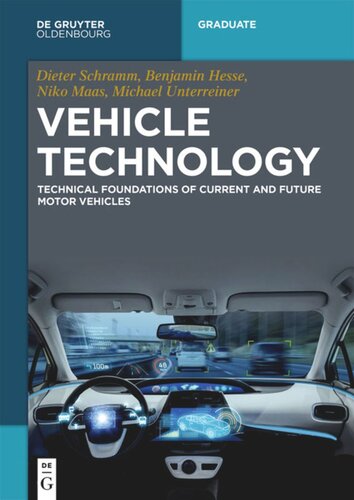

Most ebook files are in PDF format, so you can easily read them using various software such as Foxit Reader or directly on the Google Chrome browser.
Some ebook files are released by publishers in other formats such as .awz, .mobi, .epub, .fb2, etc. You may need to install specific software to read these formats on mobile/PC, such as Calibre.
Please read the tutorial at this link: https://ebookbell.com/faq
We offer FREE conversion to the popular formats you request; however, this may take some time. Therefore, right after payment, please email us, and we will try to provide the service as quickly as possible.
For some exceptional file formats or broken links (if any), please refrain from opening any disputes. Instead, email us first, and we will try to assist within a maximum of 6 hours.
EbookBell Team

5.0
108 reviews The motor vehicle technology covered in this book has become in the more than 125 years of its history in many aspects an extremely complex and, in many areas of engineering science .
Motor vehicles must remain functional under harsh environmental conditions and extreme continuous loads and must also be reliably brought into a safe state even in the event of a failure by a few trained operators.
The automobile is at the same time a mass product, which must be produced in millions of pieces and at extremely low cost. In addition to the fundamentals of current vehicle systems, the book also provides an overview of future developments such as, for example, in the areas of electromobility, alternative drives and driver assistance systems. The basis for the book is a series of lectures on automotive engineering, which has been offered by the first-named author at the University of Duisburg-Essen for many years.
Starting from classical systems in the automobile, the reader is given a systemic view of modern motor vehicles. In addition to the pure basic function, the modeling of individual (sub-) systems is also discussed. This gives the reader a deep understanding of the underlying principles. In addition, the book with the given models provides a basis for the practical application in the area of simulation technology and thus achieves a clear added value against books, which merely explain the function of a system without entering into the modeling.
On the basis of today's vehicle systems we will continue to look at current and future systems. In addition to the state-of-the-art, the reader is thus taught which topics are currently dominant in research and which developments can be expected for the future. In particular, a large number of practical examples are provided directly from the vehicle industry. Especially for students of vehicle-oriented study courses and lectures, the book thus enables an optimal preparation for possible future fields of activity.